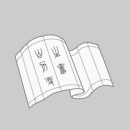
超大容量硬盘的流场性能研究
全新正版 极速发货
¥ 76.89 6.4折 ¥ 120 全新
库存4件
广东广州
认证卖家担保交易快速发货售后保障
作者李辉 等
出版社科学出版社
ISBN9787030594150
出版时间2018-11
装帧平装
开本其他
定价120元
货号1201796202
上书时间2024-11-23
- 最新上架
商品详情
- 品相描述:全新
- 商品描述
-
目录
Preface
Chapter 1 Introduction 1
1.1 Basic 1
1.2 Evolution 3
1.3 Motivation 6
1.4 Outline 8
References 9
Chapter 2 Simulation of flow and vibration characteristics in HDD level 11
2.1 Introduction 11
2.2 Fluid-structure interaction simulation model of HGA 12
2.3 Flow-induced HGAvibrations 15
2.4 Operational shock response of HGA 20
2.5 Summary 26
References 27
Chapter 3 Suppressing flow-induced vibrations of HGA by a PZT 29
3.1 Introduction 29
3.2 PZT designed on the cover inner surface 30
3.3 Flow-induced vibrations of HGA 31
3.4 PZT acoustic pressure induced vibrations of HGA 32
3.5 Summary 36
References 37
Chapter 4 Simulation of temperature distribution around laser-heating media in HAMR 38
4.1 Introduction 38
4.2 HAMR HDD model 39
4.3 Temperature distributions around the laser-heating area on the disk surface 42
4.4 Cooling effects of disk rotation and HDI gas bearing 46
4.5 Summary 48
References 49
Chapter 5 Simulation of particles trajectories in HDD considering the trapping criterion,temperature and arm swing 51
5.1 Introduction 51
5.2 Considering the trapping criterion 53
5.2.1 Particle trajectory inside HDD 56
5.2.2 Effects of particle release position 58
5.2.3 Effects of particle size 62
5.3 Effects of temperature on particle trajectories 65
5.3.1 Temperature distribution and velocity distribution 66
5.3.2 Different particle release positions 68
5.3.3 Different particle sizes 72
5.4 Effects of armswing on particle trajectories 75
5.4.1 Characteristics of fluid fields 77
5.4.2 Particle trajectories 80
5.5 Summary 84
References 86
Chapter 6 Numerical simulation of flow characteristics in HDI 88
6.1 Introduction 88
6.2 Simulation method of contaminations on ABS 89
6.2.1 Air bearing simulation 90
6.2.2 The mesh transformation method 91
6.2.3 Air velocity calculation 92
6.2.4 Air shear stress calculation 93
6.2.5 Particle trajectory 93
6.3 Effects of skew angle on the air flow patterns 94
6.3.1 Flying attitudes of slider 94
6.3.2 Effects of skew angle on the air flow velocity patterns 95
6.3.3 Effects of skew angle on the air shear stress patterns 97
6.4 Simulation of air flow and particle trajectories in HDI 98
6.4.1 Model and flying attitudes of slider 98
6.4.2 Air flow patterns and particle trajectories 99
6.5 Summary 105
References 106
Chapter 7 Study of particle trajectory and contamination in HDI 108
7.1 Introduction 108
7.2 Simulation model of particle movement in HDI 109
7.3 Particle movement behaviors in HDI 113
7.3.1 Particle trajectory in HDI 113
7.3.2 Parametric simulation of particle trajectory 114
7.3.3 Particle behaviors in HDI 116
7.3.4 Particle trajectories in the air and helium filled HDI 118
7.4 Summary 120
References 120
Chapter 8 Study of particle adhesion criterion on slider ABS 122
8.1 Introduction 122
8.2 Model and methods of the particle-slider interaction 123
8.3 Interaction between particle and slider 126
8.3.1 Adhesion criterion on the slider surface 126
8.3.2 Particle rebounding from the slider surface 130
8.4 Summary 133
References 134
Chapter 9 Analysis of the adhered particle migration on slider ABS 136
9.1 Introduction 136
9.2 Simulation model of particle migration 137
9.3 Results and discussions 141
9.3.1 Particle migration styles criterion 141
9.3.2 Effect of different factors on particle migration 144
9.3.3 Particle secondary migration trajectories and behaviors 146
9.4 Summary 148
References 148
Chapter 10 Simulation of bearing force over BPM and smooth media in helium-filled drive 151
10.1 Introduction 151
10.2 Model for DSMC simulation 153
10.2.1 DSMC simulation method 153
10.2.2 Slider-disk simulation model 154
10.2.3 Calculation models for temperature and velocity in HDI 156
10.3 Effects of different conditions on bearing force in HDD 157
10.3.1 Total bearing force acting on the slider 157
10.3.2 Component bearing force in HDD 163
10.4 Summary 165
References 166
Chapter 11 Study of perfluoropolyethers lubricant consumption and recovery in HAMR using MD simulation method 168
11.1 Introduction 168
11.2 Molecular dynamics simulation method 170
11.3 3D model of the slider-lubricant-substrate system 170
11.4 PFPE desorption and recovery 173
11.5 Summary 180
References 181
Chapter 12 Study of formation and breaking of lubricant bridge in HDI by MD simulation method 183
12.1 Introduction 183
12.2 3D model of the slider-lubricant-substrate system 184
12.3 Formation and breaking of lubricant bridge 188
12.4 Summary 195
References 196
内容摘要
近年来,随着数据存储需求的不断增加,硬盘的存储密度正快速增长。本书针对超大容量硬盘内部磁头飞行高度低、数据存储密度高等特点,运用商业软件及自主开发程序从宏观以及微观两个角度全面并详细的研究和分析了超大容量硬盘内部流场性能。
相关推荐
— 没有更多了 —




















以下为对购买帮助不大的评价